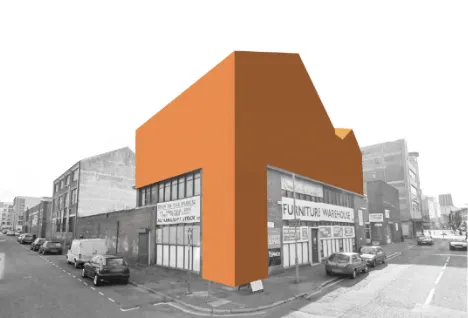
Part VII: The Start of Something Big
By 2015, things were beginning to shift in the old warehouses on Gildart Street. A deal was struck over the leaseholds, finally unlocking the chance to invest properly in the buildings. It felt like the first domino tipping—small movements that would set much bigger things in motion.
Local architects https://mgma-architects.co.uk/ produced a feasibility study for what was then called “Printworks.” Their vision mapped out a creative hub that blended workspace with community—a vision not far from what The Tapestry has since become. One of the suggested anchor tenants was Does Liverpool, though it would be a few years before that idea took root .

It provided a rough plan for a mixed-use of the Warehouses that was Visionary and is actually very close to what the Tapestry has evolved into for Gildart St.

It named https://doesliverpool.com/ as an anchor tenant but this didn’t materialise until a few years later.

Around this time, Jason began walking the streets, knocking on doors, asking the people who knew the area best: what do you think should happen here? That curiosity sparked chance encounters. One was with Suzy and Richard Jennions, whose family had run the Try and Lilly hat factory in the area for over four decades. Soon, a WhatsApp group was buzzing with local voices eager to reimagine this forgotten part of the city .

The name Fabric District emerged from those early conversations—a name that honoured the area’s textile and maker history while pointing towards a future for creatives of every kind. It was a step away from the old “Islington” label, and it stuck .

The Baltic Triangle was already making waves as Liverpool’s new creative playground, and its story offered inspiration. Baltic Creative’s CEO, Mark Lawler, became an ally, encouraging the group to build a stakeholder community and develop a shared vision. That vision, still alive today, became the backbone of the Fabric District movement. https://fabricdistrict.co.uk/our-vision/

Meanwhile, Jason was introduced to Atul Bansal of https://www.sheilabird.com/ the design mind behind Manchester’s 24 Lever Street.
Atul visited the Gildart Street warehouses, immediately saw the potential, and generously offered his expertise. His “look and feel” sketches gave people something tangible to believe in and rally around .

Momentum built. Funding came through. Renovations began. And slowly, local creatives signed up to be part of something bigger.
Among the first was artist Jayne Lawless, who fell for the raw upper floors—despite them being home to more pigeons than people at the time. She christened her gallery “The Dead Pigeon Gallery” https://jaynelawless.co.uk/projects/dead-pigeon-gallery/ , and The Tapestry became its very first host.

What began as sketches, conversations, and a WhatsApp group was now becoming real. The Tapestry wasn’t just about refurbishing warehouses—it was about weaving together people, ideas, and a shared belief that this overlooked part of Liverpool had a future worth building.